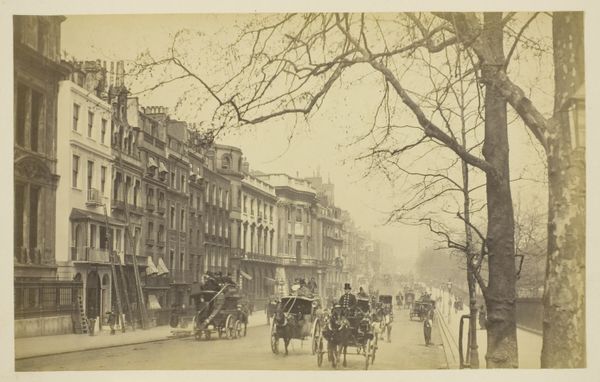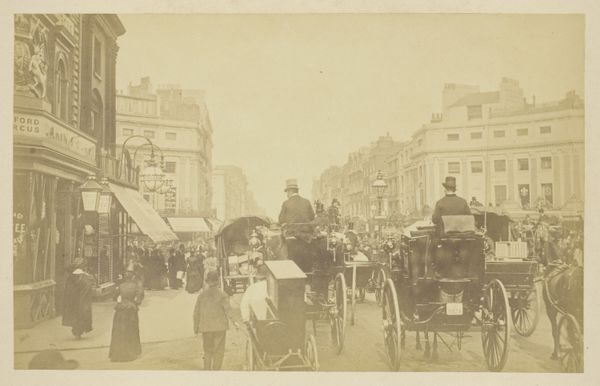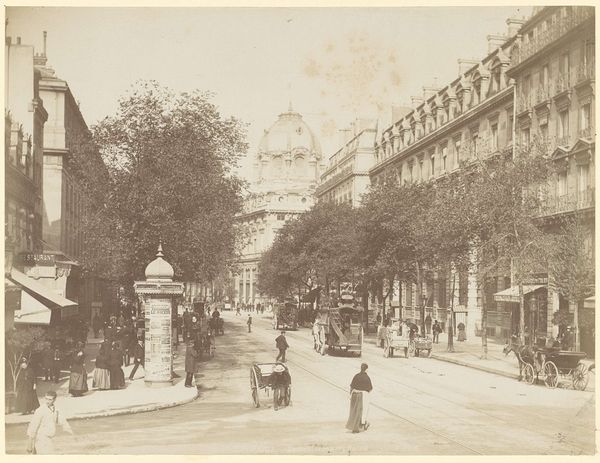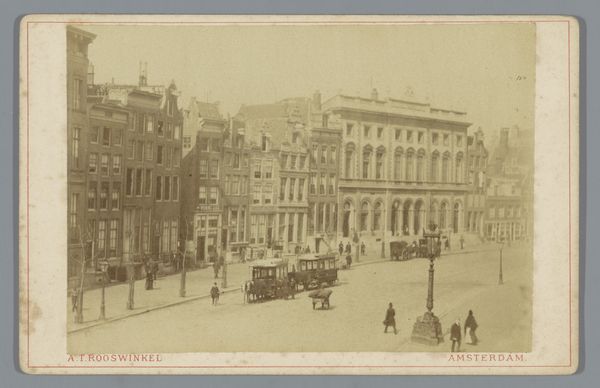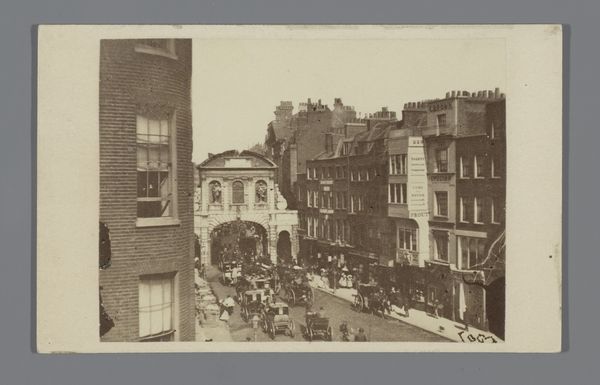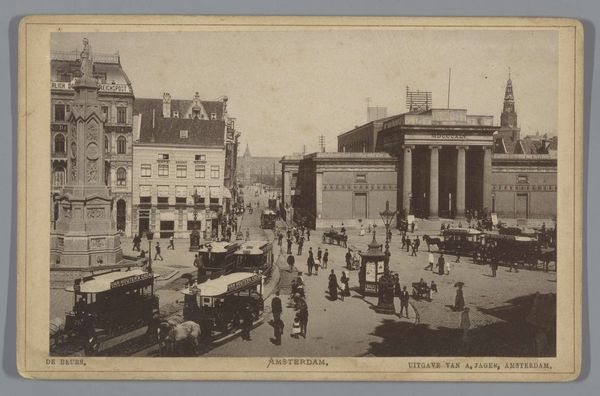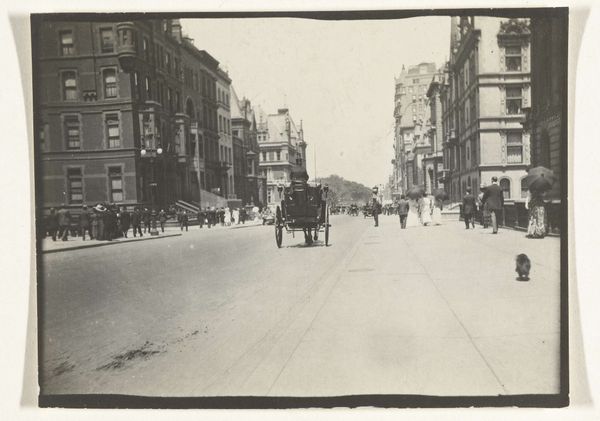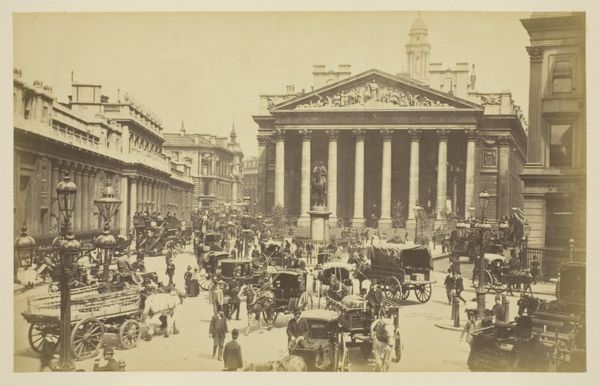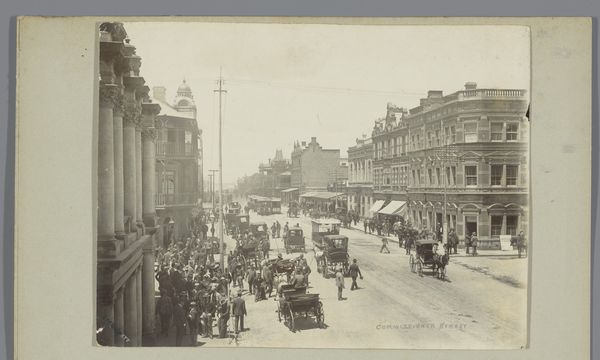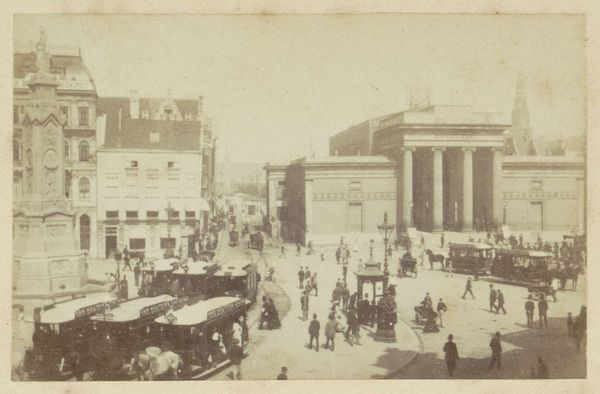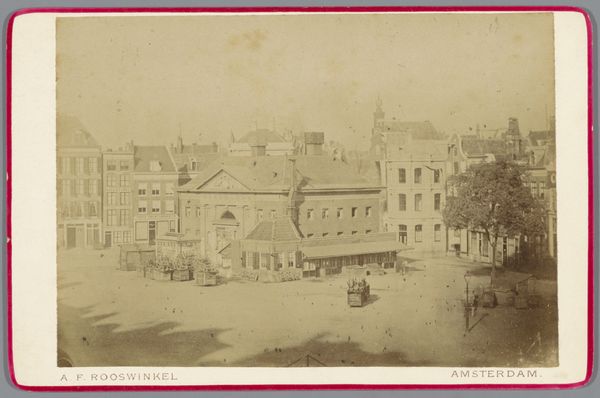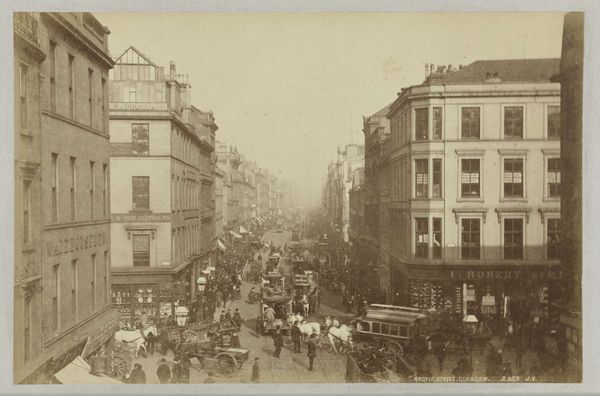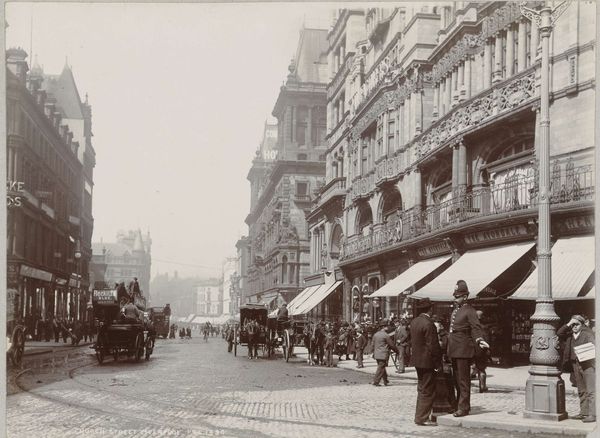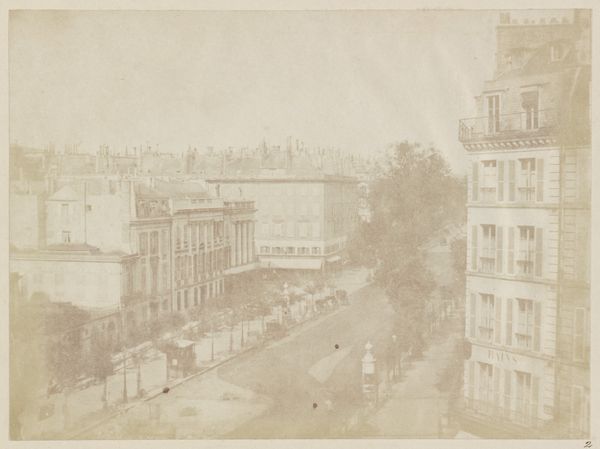
Dimensions: 12.7 × 20.7 cm (image/paper); 20.2 × 27.5 cm (mount)
Copyright: Public Domain
Curator: This arresting view before us, simply titled "The Strand," offers a fascinating glimpse into late 19th-century London. Its author remains anonymous, adding to the mystique surrounding this photogravure print, which finds its home here at the Art Institute of Chicago. Editor: Immediately, I’m struck by how incredibly *dense* the composition is. You feel the sheer *weight* of the urban environment—the buildings, the carriages, even the implied crowds. The texture alone seems almost palpable. Curator: Indeed, that density speaks volumes about urbanization at the time. This print captures not only the architecture, but also the bustling public sphere—the negotiation of class, gender, and mobility that defined the Victorian city. Consider how public space functioned then—and who it excluded. Editor: Absolutely. I’m also noticing the *process* of image-making at play here. Given its adherence to pictorialist aesthetics, do you see a challenge to art boundaries, particularly regarding the traditionally marginalized domain of photographic processes versus fine art printmaking? Curator: A brilliant observation! Pictorialism actively sought to elevate photography to the status of "art" through carefully manipulated prints. In that sense, it was very much a social maneuver by some to democratize art creation for all while some used the movement to continue reinforcing a status quo by trying to imitate painting.. It also served a burgeoning tourism industry in England. Editor: I'm seeing it now! It brings to light this constant reevaluation of labor, material and technique as an ever fluctuating criteria that grants social mobility in Victorian England. Also notice how the medium filters everything. This sepia tone lends the image an almost dreamlike quality, softening the hard edges of the city and perhaps romanticizing the subject. Curator: And look at the viewpoint--the seemingly infinite receding perspective pulls you straight down The Strand, a major artery of London society. It positions us, the viewers, within the flow of city life, though distanced as observers of a bygone era and of subjects in their own world apart. This perspective echoes classic strategies employed in landscape paintings of that era. Editor: Thinking of these echoes brings up another crucial facet. With the proliferation of photography, we are also considering *consumption*. Were photographs like these sold in England as documentation or novel pieces of material? Curator: Precisely. That complex relationship between production, representation, and consumption forms an important element of Victorian-era photographs. We can consider the way such imagery affected England's identity as the hub of trade. Editor: It's amazing how much is packed into what seems, on the surface, a simple street scene. Looking at it materially, then thinking of labor practices—all within that social and historical lens... it really reframes how we consider this “The Strand." Curator: Exactly. And thinking about this imagery as performative and gendered...these considerations allow for such pieces of art to become more potent and dynamic.
Comments
No comments
Be the first to comment and join the conversation on the ultimate creative platform.
